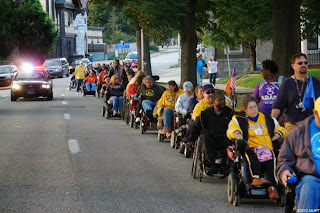Please use the survey put together by the Tennessee Justice Center as an easy means to submit comments. By taking this short survey and adding your comments after you answer each survey question, your comments will be sent anonymously.
Survey on work reporting requirements.
February 7th is the last day to submit comments on this proposal. To learn more about this and to submit comments take this survey on work reporting requirements.
The responses to this survey would generate at least 5 separate comments (depending on how you answer) for the federal comment period. The Tennessee Justice Center submit those comments on your behalf anonymously. All you have to do is the survey.

Please pass this on to your friends, even people outside of Tennessee can do it.
https://www.surveymonkey.com/r/tenncaresurvey
A robust federal comment period helped Kentucky defeat work reporting requirements in their state.
A federal district court decided to vacate a plan from the Kentucky government to implement work requirements for able-bodied adults in the state Medicaid program. That decision calls into doubt an initiative strongly favored by the Trump administration and several Republican governors across the country. It also challenges a larger administration plan to refashion all federal welfare and means-tested poverty programs, and should kick off a flurry of court activity on the issue.
Kentucky created the work requirement in its Medicaid program back in January, after the Centers for Medicare and Medicaid Services issued official guidance encouraging “state efforts to test incentives that make participation in work or other community engagement a requirement for continued Medicaid eligibility.” Formerly, federal administrations had never approved state restrictions in Medicaid like work requirements or drug-testing that constrained base eligibility for the program. After expanding Medicaid to all low-income adults in participating states, President Obama’s CMS was particularly stringent about this, approving state waivers that restructured elements of Medicaid programs and even reduced benefits, but never approving a waiver from a state involving work requirements.

